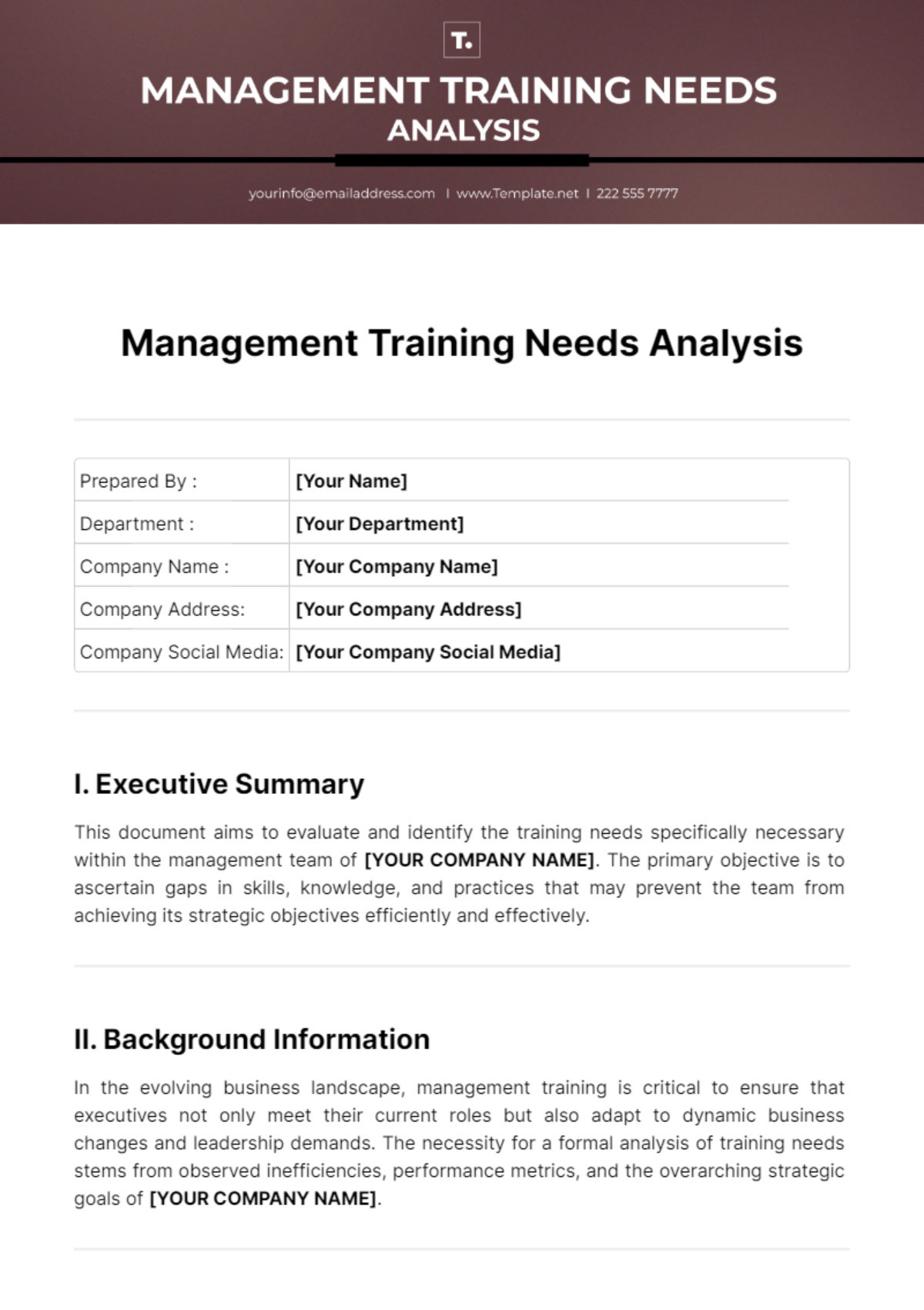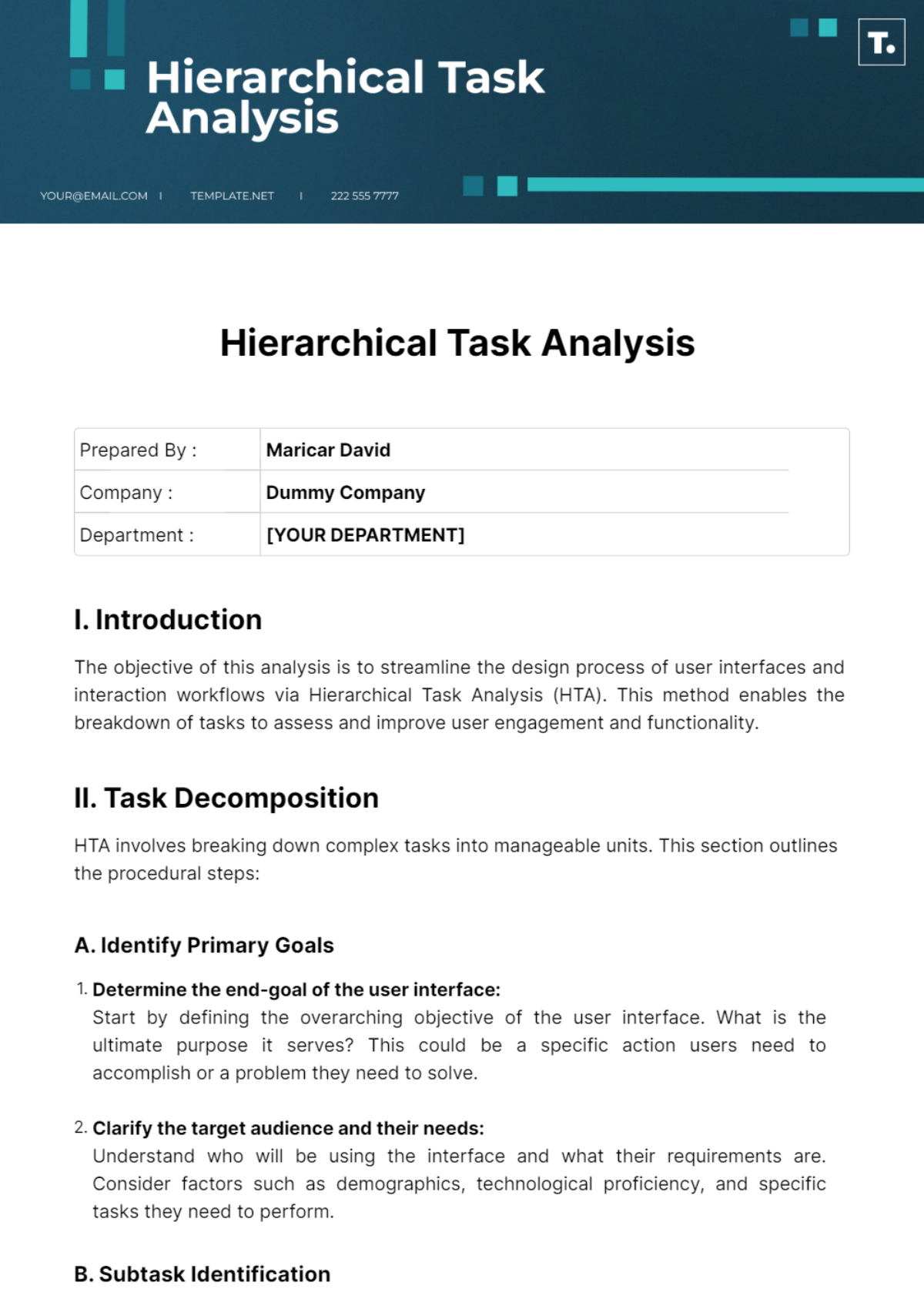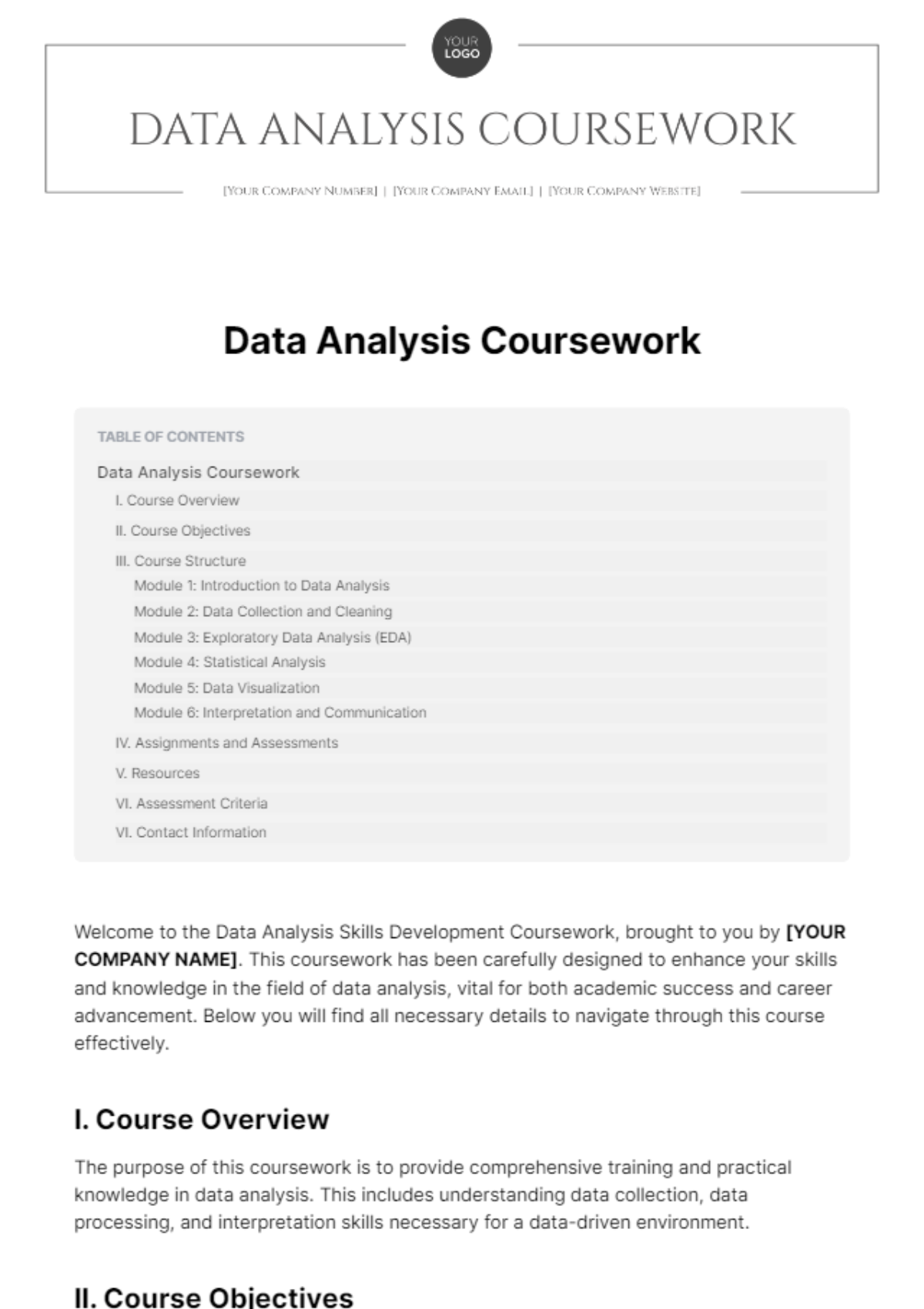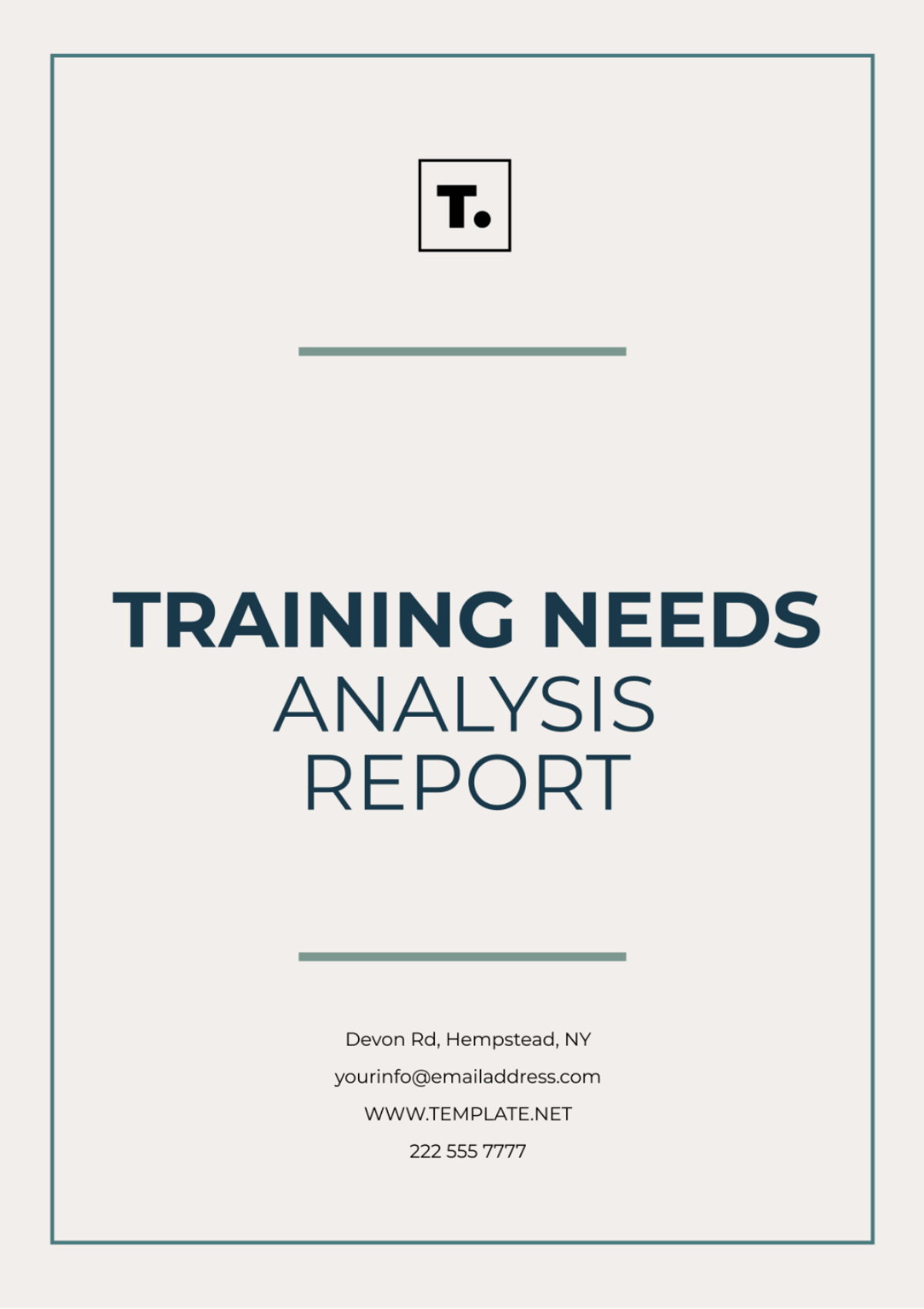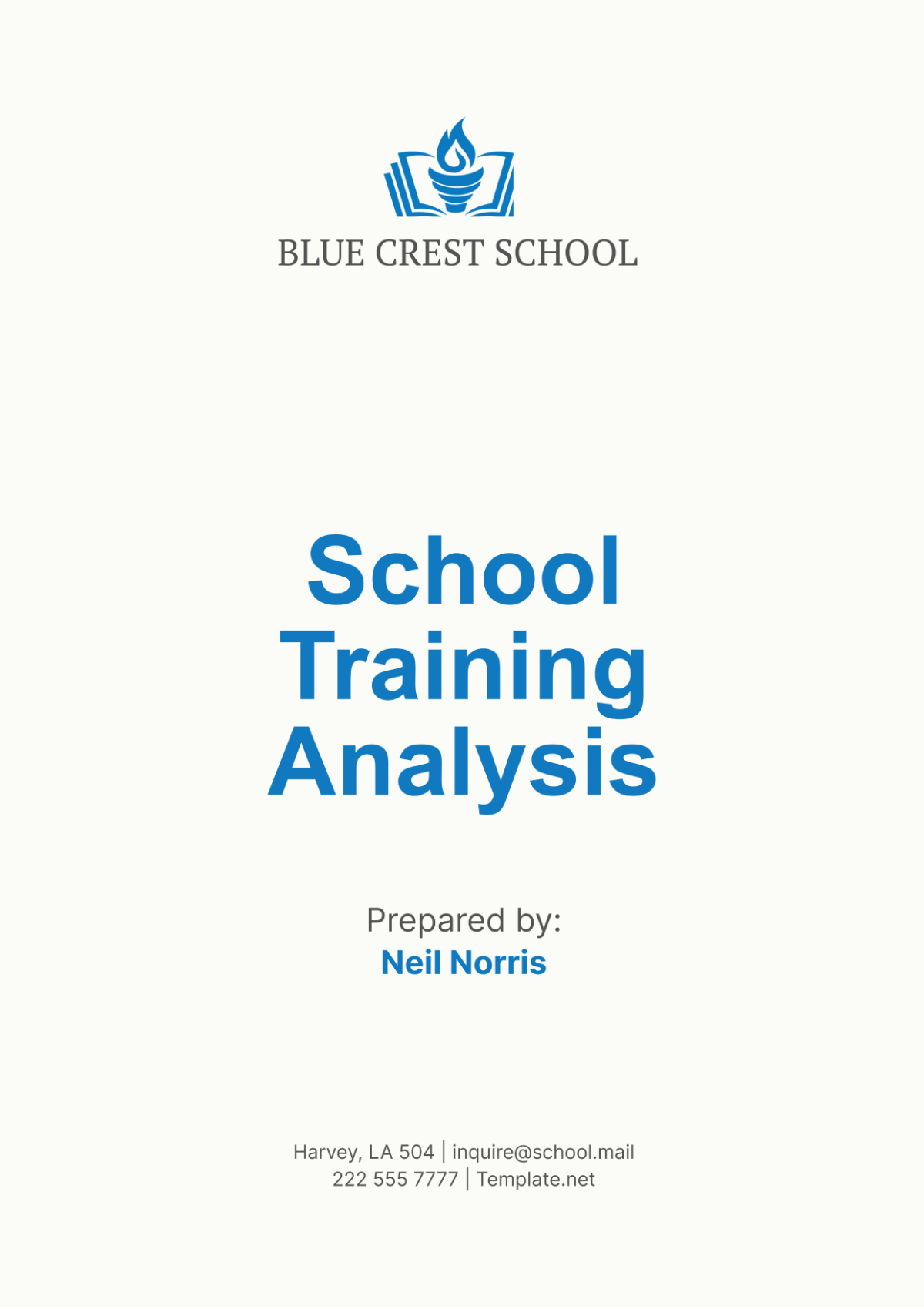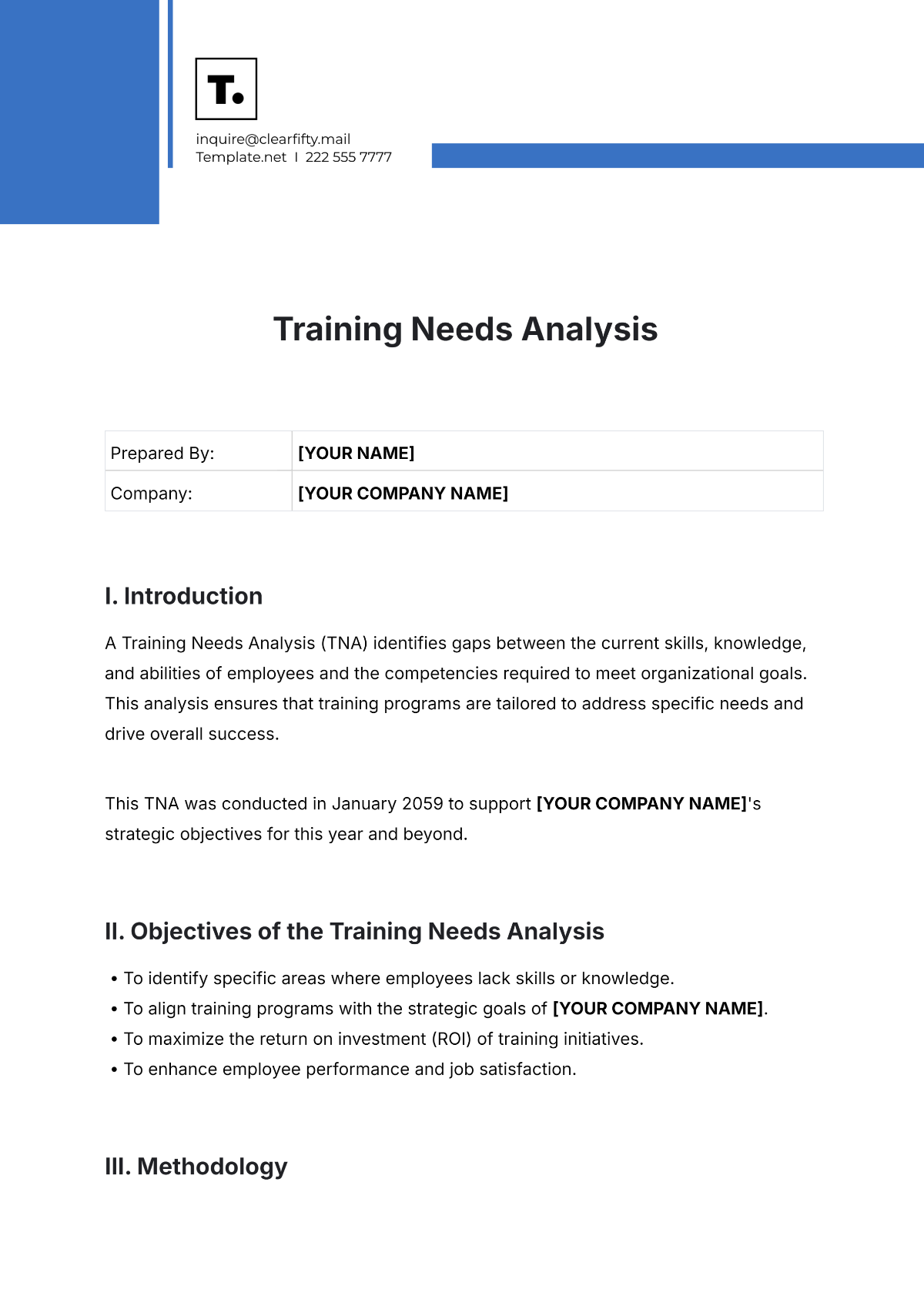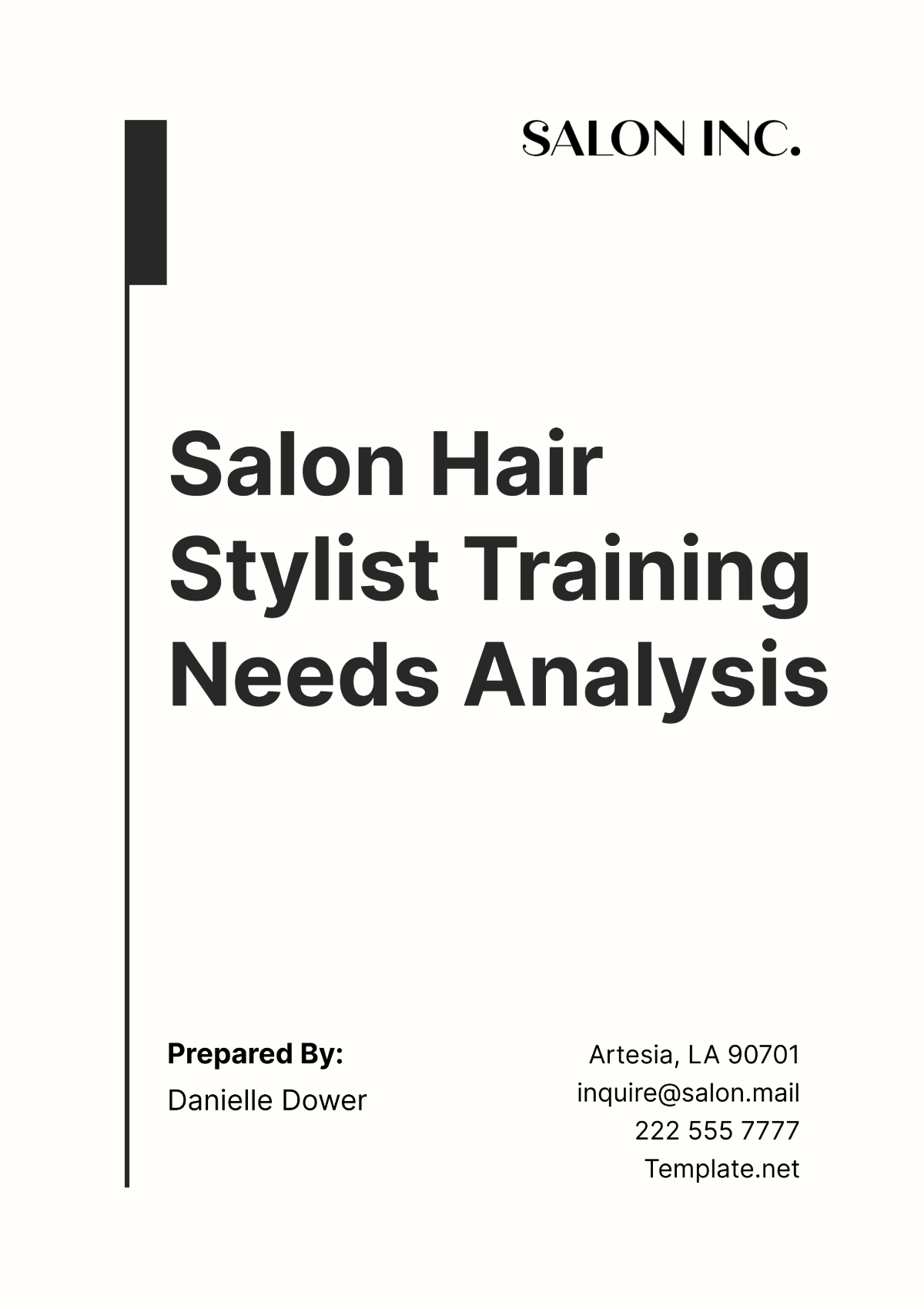Hierarchical Task Analysis
Prepared By : | Maricar David |
Company : | Dummy Company |
Department : | [YOUR DEPARTMENT] |
I. Introduction
The objective of this analysis is to streamline the design process of user interfaces and interaction workflows via Hierarchical Task Analysis (HTA). This method enables the breakdown of tasks to assess and improve user engagement and functionality.
II. Task Decomposition
HTA involves breaking down complex tasks into manageable units. This section outlines the procedural steps:
A. Identify Primary Goals
Determine the end-goal of the user interface:
Start by defining the overarching objective of the user interface. What is the ultimate purpose it serves? This could be a specific action users need to accomplish or a problem they need to solve.
Clarify the target audience and their needs:
Understand who will be using the interface and what their requirements are. Consider factors such as demographics, technological proficiency, and specific tasks they need to perform.
B. Subtask Identification
Break down primary goals into smaller, sequential tasks:
Once you have identified the main objectives, divide them into smaller, more manageable tasks. These tasks should follow a logical sequence that users can easily understand and execute.
Document each subtask’s purpose and requirements:
For each subtask, clearly define its purpose and the specific requirements needed to accomplish it. This could include input data, system constraints, or user preferences.
C. Task Validation
Consult with stakeholders and end-users for feedback:
Gather input from relevant stakeholders, including users, designers, developers, and any other parties involved in the project. Their perspectives can provide valuable insights into the effectiveness and usability of the interface.
Adjust subtasks according to the feedback received:
Use the feedback gathered to refine and optimize the subtasks identified. This may involve restructuring the sequence of tasks, modifying task requirements, or addressing any usability issues highlighted by stakeholders.
Table: Subtask Documentation
Subtask ID | Subtask Description | Purpose | Requirements |
|---|---|---|---|
1 | User Authentication | Verify user identity | Username, password, security measures |
2 | Data Entry | Input necessary information | Form fields, data validation |
3 | Data Processing | Analyze and manipulate data | Algorithms, data sources |
4 | Report Generation | Generate summary reports | Report templates, data aggregation |
III. Workflow Analysis
Analyze the designed workflow to ensure that it is intuitive and meets user expectations:
A. Diagram Creation
Create visual representations of the task flows using flowcharts.
B. Interaction Matrix Development
Develop tables that document possible user interactions and outcomes:
Interaction | Expected Outcome |
|---|---|
User logs in | Access to user dashboard |
User inputs data | Data is saved and confirmed |
IV. Usability Testing
Test the user interface to ensure it meets predetermined usability standards:
1. Conduct User Testing Sessions
Plan Testing Sessions:
Determine the scope and objectives of the usability testing. Decide what aspects of the interface you want to evaluate and establish specific tasks for users to perform during the testing sessions.
Recruit Participants:
Select a diverse group of participants who represent the target audience for the interface. Consider factors such as age, gender, technical proficiency, and familiarity with similar systems.
Facilitate Testing Sessions:
Conduct testing sessions in a controlled environment where participants can interact with the interface. Provide clear instructions and guidance to participants, but allow them to explore the interface independently.
Collect Data:
Use a variety of methods to collect data during the testing sessions, including observation, think-aloud protocols, surveys, and questionnaires. Capture both qualitative feedback (e.g., user observations and comments) and quantitative data (e.g., task completion rates and time on task).
2. Analyze Test Results
Review Data: Analyze the data collected during the testing sessions to identify patterns, trends, and common issues. Look for recurring themes in participant feedback and observe how users interacted with the interface.
Identify Areas for Improvement: Use the test results to identify specific areas of the interface that may need improvement. This could include usability issues, navigation problems, or features that are unclear or difficult to use.
Prioritize Changes: Prioritize the identified issues based on their impact on usability and user experience. Focus on addressing critical issues that significantly affect user satisfaction and task performance.
Iterate and Refine: Use the insights gained from usability testing to iterate and refine the interface design. Make necessary adjustments to improve usability, streamline workflows, and enhance the overall user experience.
Table: Usability Testing Results
Participant ID | Task Completion Time | Errors Encountered | Feedback |
|---|---|---|---|
1 | 5 minutes | None | "The interface was easy to navigate." |
2 | 8 minutes | 2 | "I had trouble finding the submit button." |
3 | 6 minutes | 1 | "The menu layout was confusing." |
In this table, each row represents data collected from an individual participant during usability testing. The table includes information such as the participant's ID, task completion time, errors encountered, and qualitative feedback. This format helps organize and summarize the test results, making it easier to identify common issues and areas for improvement.
V. Conclusion and Recommendations
Summarize the HTA findings and propose actionable steps to enhance the user interface design:
Review all feedback and data gathered during the usability testing phase.
Implement changes to the design based on the analysis.
Plan for periodic review and adjustments post-deployment to adapt to user needs.

